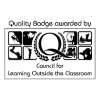
Vienna is a popular alternative study trip for students of Psychology & Sociology. Home to Sigmund Freud for 47 years, students can explore his former apartment and help put his biography into context. Walking tours can cover topics such as Jewish Vienna and the war time Jewish ghetto whilst providing a great opportunity to visit popular historical landmarks and museums.
Use our sample itinerary to help picture what your trip could look like. Our itineraries are flexible, visits and timings will be planned based on your needs.
We can include specific visits in your itinerary, additional visits can be added based on the trip length and needs of the curriculum or teacher.
Get A QuoteWe can include specific visits in your itinerary, additional visits can be added based on the trip length and needs of the curriculum or teacher.
Get A QuoteAt WST the customer is at the heart of everything we do. A strong set of values runs right from the core of our business. We believe that this is what makes us stand out from the crowd.






Please select a type of trip below:
Need to speak to an expert?
Need to speak to an expert?
Need to speak to an expert?
Your Enquiry has been received by , our school trips provider.
We’ll get back to you within 24 hours via your email or by phone on .
We have been operating school tours for over 35 years so we know a thing or two about planning a school trip. One of the benefits of this is that we have an abundance of knowledge and supporting documents to share with you. In our resources area you will find everything you need for your school trip planning:
Featured Resource
You need to know you can book with a tour operator who has everything covered for you.
This guide will assist you completing your own risk assessments covering areas such as:
Our team of destination specialists will help you find the perfect trip for your group's study needs.